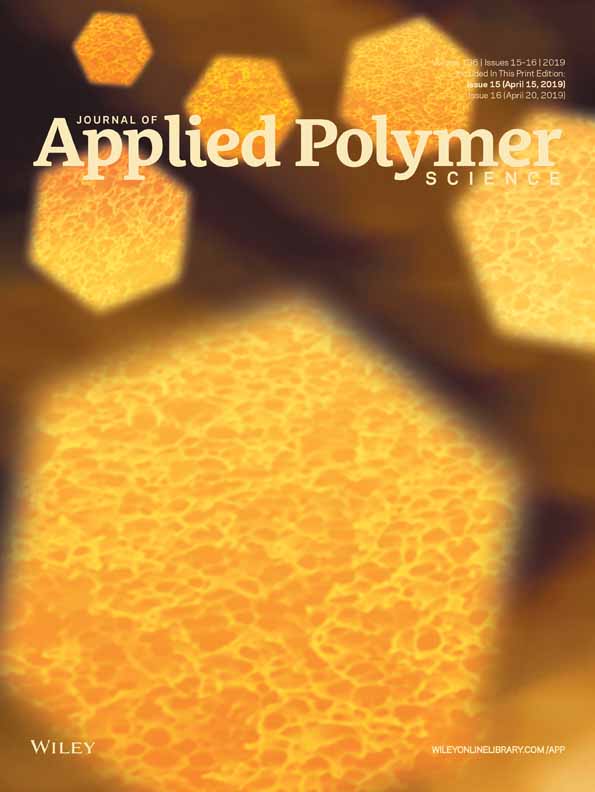Synthesis of polyamides from sugar derived d-glucaric acid and xylylenediamines
ABSTRACT
d-Glucaric acid (GA) is the one of aldaric acids and is an important bio-based building block for polymers. In this study, poly(m-xylylene-acetyl glucaramide) and poly(p-xylylene-acetyl glucaramide) were synthesized from GA acetate and two kind of aromatic diamines by solution polymerization. The chemical structures of the polyamides were analyzed by nuclear magnetic resonance spectroscopy. The weight-average molecular weights ranged from 3.3 × 103 to 1.15 × 104 with a polydispersity of 1.6–1.9, depending on monomer ratio or monomer concentration in solution. The 10% decomposition temperature of the polymers was about 210 °C. Differential scanning calorimetry revealed that the polyamides exhibited no peaks attributed to crystallization or melting point, which indicated that the polyamides were amorphous. No crystalline pattern was observed in the X-ray diffractograms, supporting this result. Polarized optical microscopy observation revealed that the polyamides exhibited melting-like behavior at above 150 °C, which was attributed to glass-transition behavior. © 2018 Wiley Periodicals, Inc. J. Appl. Polym. Sci. 2019, 136, 47255.
CONFLICT OF INTEREST
The authors declare no competing financial interests.




